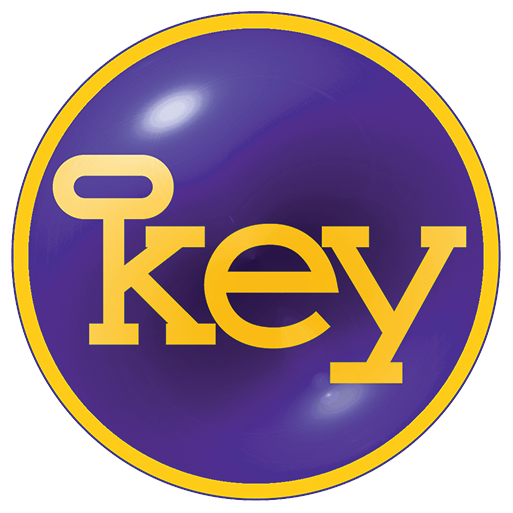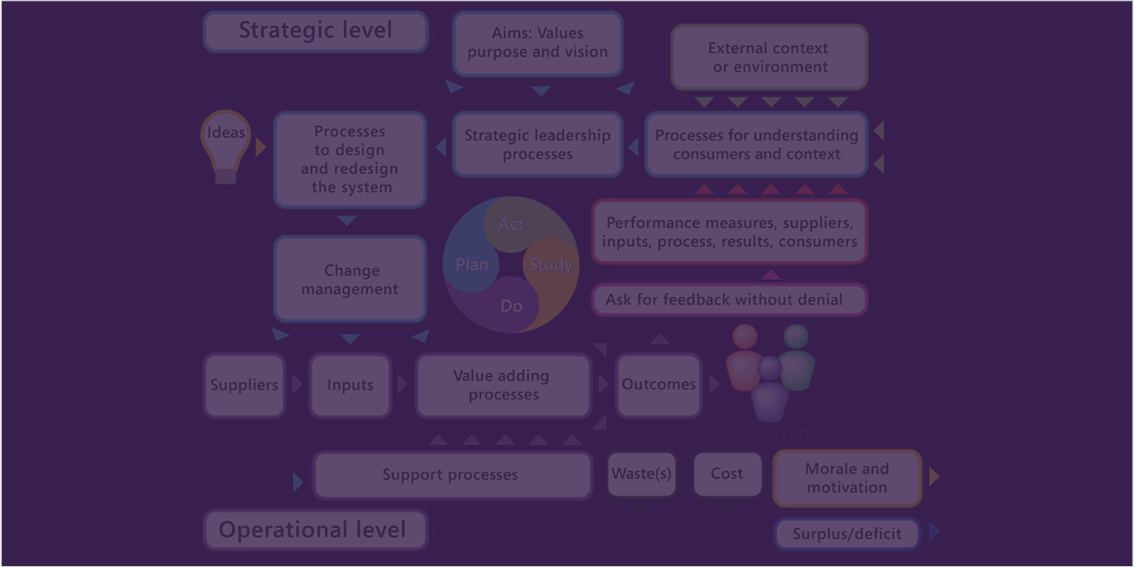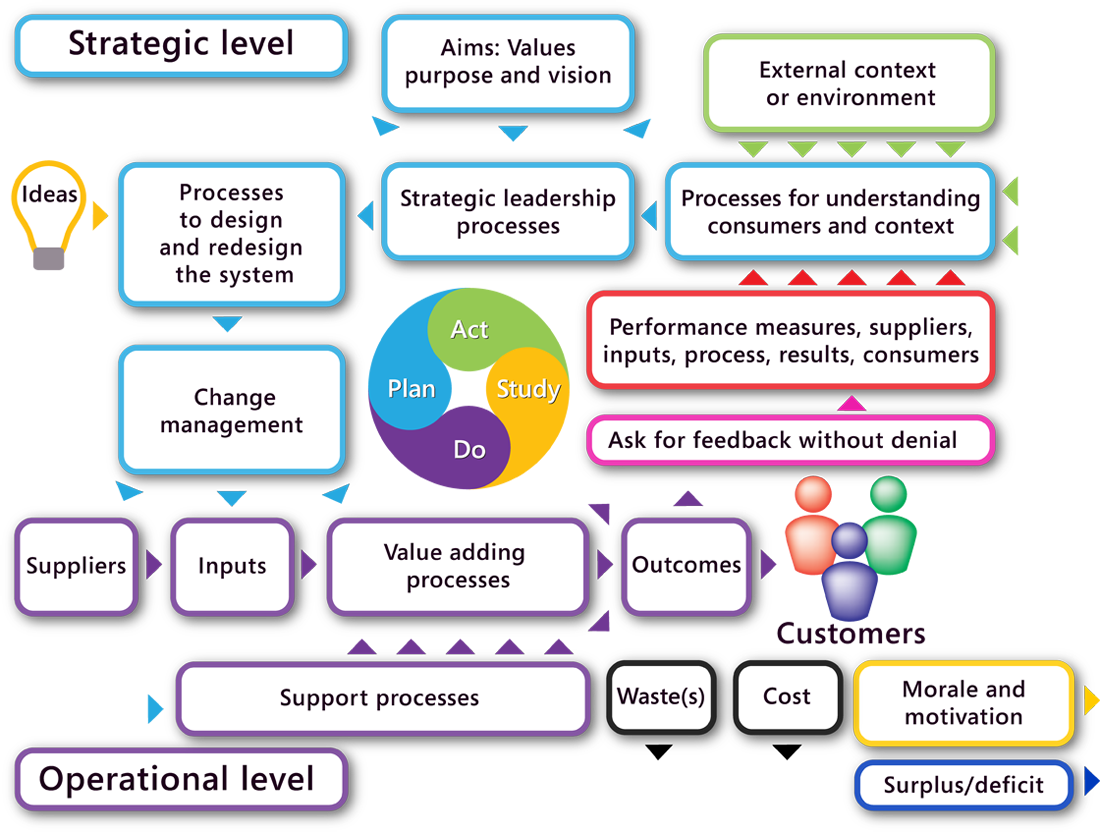The Flow & Feedback (2F) Diagram below is a way to visualise relationships in your business. It also works for divisions, departments and teams. The name comes from its two basic jobs. First, it shows the value stream (in purple) to your customers and how the parts of your business relate to this. The second job is to show the feedback loop (in red and blue) that drives continual learning and improvement.
Flow and Feedback (2F) Diagram Copyright Alan C Clark
You can see that the 2F Diagram, above, is based on the SAPDo learning and improvement cycle. At the heart of the diagram is the value stream focusing on customers. It’s what you do. 2F shows how everyone else in the business supports the processes actually adding value. Essential support functions are HR, IT, Finance, Facilities, etc. They are like the pillars that support a bridge and not the road that is delivering value.
There are other outcomes from your business in addition to what your customers get: Waste, Cost, Morale & Motivation and Surplus or Deficit. Yes these are outcomes of your business system as a whole whether you like it or not. If you want to improve these you must change the system. To put another way, you get what you get because that is what the system is able to deliver. So the typical business-as-usual way of just setting targets alone won’t necessarily get your desired outcomes, see Er-hem below. The managers’ role is to lead change in the business in the way that it operates as a system.
The feedback loop follows the SAPDo cycle and is used to drive change in the system. It starts at Study in SAPDo, which, in this case, is measuring, analysing and acting upon signals from performance measures. Follow the processes round through Understanding consumers & context, Strategic leadership, Design and redesign the system, and Change management. Ask yourself which of these processes do you have in place? Let’s look at the feedback loop in more detail.
Proper Processes understanding for consumers and context are required to identify, analyse and alert the need for change in response to outside influences. It cannot be left to chance.
Strategic leadership processes are responsible for where the business is going and identifying the need for change from analysis of performance measures and changes from outside your system.
Processes to design and redesign the system must be a response to decisions to change by strategic leadership. It is extremely important to involve people from the frontline, from the value stream and relevant support processes. They are powerful in initial specifications, later in validating design and redesign proposals and later still feeding back after the execution of the changes.
Putting in place a revised system requires Change management. It will not happen on its own. Management all levels is responsible at for providing leadership and process for change. It is essential that people from the teams who are facing change are involved at all stages of change. They can contribute knowledge of what is actually happening on the ground.
2F Worksheet
As stated above, before you start making changes to improve outcomes you need to know what you have now. We recommend that you use 2F to map your whole business, or the part that you are interested in, such as a division, department or team.
2F acts as guide to help you ask better questions. The 2F diagram above can be used as a basis for this or you can use the 2F Worksheet below. The worksheet is available in text/table form from the authors so that you can enter your information.
In practice, when using 2F for a whole business the worksheet can become an index for other documents that carry the detail. In this case, 2F can be used in nested form with further versions of the worksheet expanding the elements down to team level if you wish.
It is important to realise that the boxes in both the diagram and the worksheet are only guides and the borders are porous especially for the flow of value!
Example 2F Worksheet Copyright Alan C Calrk
Want to learn more? Click to contact me…



